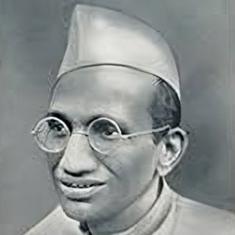More than two decades after two classics on the subject of photography, Susan’s Sontag’s On Photography (1977), and Roland Barthes’ Camera Lucida (1980, in French), the French Nobel Laureate Annie Ernaux’s The Use of Photography (co-written with the late French photographer and journalist, Marc Marie) was published in the original French in 2005, and in English translation by Alison L Strayer in 2024. Sontag’s is a historical and sociological examination of the role played by photography in 1970s America. While Sontag’s critical exploration is objective, Barthes’ narrative is pensive and personal. There are no photographs in Sontag’s book, while Barthes often used photographs to illustrate an argument or reading.
After love
The Use of Photography introduces interesting departures from Sontag and Barthes. The presence and meaning of the human face are central to Barthes’ observations on photography, and the photographs in the book accentuate it. In striking contrast, Eranux’s project in collaboration with her lover, Marie, keeps the human body – or the human object in photographs – out of the scene. For Ernaux, the photographs taken by Marie and her were meant to “preserve images of the devastated landscape that remains after lovemaking.” Annie and her lover were not satisfied with making love and “needed to preserve a material representation of the act”. They did this by clicking pictures of the accidental mise en scène as a mark of pleasure. The unique architecture of the photographs included hurriedly cast-off clothes, underclothes and shoes lying on the floor, sometimes against a larger background of the room filled with other objects. It was, in Annie’s words, “the objective trace of our pleasure.”
This postcoital act of photographing – sometimes immediately, sometimes later – became an obsession for them. The rule they established was simple: to touch nothing till they were photographed, like “the cops would do after a murder”, as Marie put it. If anyone touched anything accidentally, the scene wouldn’t be photographed. It was being faithful to the crime, a pact of ritual honesty. Sometimes, Ernaux writes, they struggled to recollect the room and day of lovemaking from the photograph. It was in the course of this newfound passion that the idea of writing separately on the photographs occurred to them. They also made the rule of not showing their drafts to each other until they had finished the project.
Eroticism is a game of rules, and erotic photography replicates it by devising a way to deflect the gaze from the obvious object (the naked human body) to objects that suggest the intense act of nakedness. Ernaux and Marie’s project can be precisely found in what Barthes says about erotic photography in contrast to pornography: “The erotic photograph, on the contrary (and this is its very condition), does not make the sexual organs into a central object; it may very well not show them at all; it takes the spectator outside its frame”. Erotic photography, then, is simultaneously about the absence of the body and the reminder of its presence. This creates the necessary space for memory games.
Ernaux finds the act of writing on the photographs in relation to the fleeting, sexual memory associated with them “a sort of new erotic practice.” It meant for her a risky act of transgression that was “more violent than to open up your sex.” Writing, unlike sex, was a public exposure of a private act. Taking this risk to its extreme has been Ernaux’s lifelong occupation.
The element of shock in The Use of Photography comes from the revelation that Ernaux has breast cancer and is undergoing chemotherapy. Marc was obviously jolted when Ernaux broke the news to him in a matter-of-fact way while they were dining at a place on the cobbled street in Paris named Rue Servandoni. This aspect of their story and relationship adds a poignant and vulnerable layer to their project. Ernaux could lighten the effect by writing, “Because of my totally smooth body he called me his mermaid-woman. The catheter like a growth protruding from my chest became a ‘supernumerary bone’”. Marie made it sensual by suggesting a haunting ménage à trois: “For months, we live together as a threesome: death, A and me. Our companion was intrusive.”
Eroticism, as Georges Bataille wrote in the introduction of Eroticism, Death and Sensuality (1962, in English translation by Mary Dalwood), is an affirmation of life to the point of death, which is quoted in the epigraph of Ernaux and Marie’s book. But Bataille reads eroticism in a deeply religious manner. He connects eroticism to the desire to procreate, and finds it fundamentally violent in his imagination of human beings as discontinuous selves forcibly coming together in an act that violates their solitude. Since we die alone, Bataille thinks our attempts at making love are to transgress our existential limits and plunge into an act that borders on death, murder and suicide. Sex is the hastening of death by our attempts to escape it. Bataille hallucinates on sex. He would, however, have countered this by arguing that the briefly transgressive aspect of sex involves an element of hallucination.
Octavio Paz appears more persuasive in the crucial distinction he makes between sex and eroticism in The Double Flame: Love and Eroticism (1995, translated from Spanish by Helen Lane): “Eroticism is sex in action, but, because it either diverts it or denies it, it thwarts the goal of the sexual function. In sexuality, pleasure serves procreation; in erotic rituals, pleasure is an end in itself or has ends other than procreation.”
Objects of recall
The Use of Photography testifies to a double, psychological diversion after sex, through photography and writing. To divert the experience of something with another thing is to create modes of escape and intensification through which one can return – delayed – to what has been lost in time. The erotic nature of photography and writing in this project opens up the possibility to obsessively return to the original moment of desire. The “use” of photography in that instrumental sense is to ensure that (modern) technology makes the afterlife of sexual memory possible.
Here is a sample of Annie describing one of the photographs taken in her living room:
“Of all the things abandoned on the floor after lovemaking, shoes are the most moving – overturned, or upright but heading in opposite directions, or adrift on top of a heap of clothes but still far apart. The distance between them, when it can be seen in the photo, reflects the force with which they were flung off.”
This description is reminiscent of André Breton’s idea of “convulsive beauty” in Mad Love (1987, translated from L’Amour Fou by Mary Ann Caws), where a certain art, or experience, involves “affirming the reciprocal relations linking the object seen in its motion and in its repose.” Breton called it “veiled-erotic, fixed-explosive, magic-circumstantial”. The fixed image of clothes and shoes flung in haste offers the surreal image of objects that convey both motion and stillness, activating a memory or a perception of time past.
There is a moment when Annie makes one of those startling connections between sex, photography and writing and the material trace of life that pervades each act:
“I realise that I am fascinated by photos in the same way I’ve been fascinated, since childhood, by blood, semen and urine stains on sheets, or old mattresses, discarded on pavements; by the stains of wine and food embedded in the wood of sideboards, the stains of coffee or greasy fingers on old letters… I realise I expect the same thing from writing. I want words to be like stains you cannot tear yourself away from.”
Some objects are objects of recall. They initiate the possibility of what Marcel Proust explored in Remembrance of Things Past (originally, 1913) as mémoire involontaire, or involuntary memory. The purely material use of the word “stain” removes the moral stain attached to that word. Life is a series of fragilities, comprising intimate proofs left behind by vulnerable beings of hunger and pleasure. Those proofs are often discovered in what is no longer useful, in what has been forever discarded, left behind, or expressed in some form or other, as unalterable as a stain on a piece of cloth, a pavement, a sidewalk, a cup, or words in a book. Each trace is a reminder of life, the sign of its inevitable erasure.
Close to the finish, Ernaux pauses over the philosophical ache of the project:
“The pain of the photograph. It comes from wanting something other than what is. The boundless meaning of the photograph. A hole through which the fixed light of time, of nothingness is perceived. Every photo is metaphysical.”
The essence of the photograph does not lie in what it shows, but in what it hides. The shadow that falls on the page, or the photograph, on what is written or clicked by the human hand, is the imperceptible presence of death. Writing, love making, or photography are hieroglyphic acts of time. The body performs them to enact its pleasures on itself, and lose it forever at the moment of execution. The Use of Photography takes us to the heart of our most delicious crisis.
Manash Firag Bhattacharjee’s latest book Gandhi: The End of Non-Violence was published earlier this year by Penguin Random House India.

The Use of Photography, Annie Ernaux and Marc Marie, translated from the French by Alison L Strayer, Fitzacarraldo Editions.










